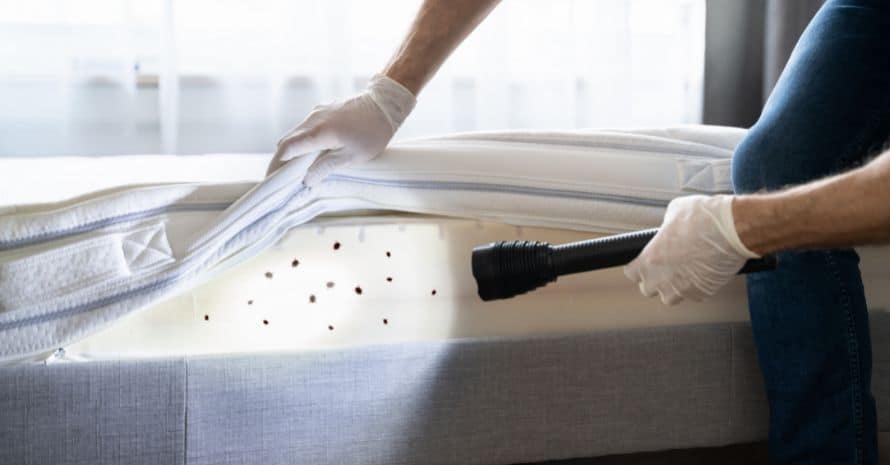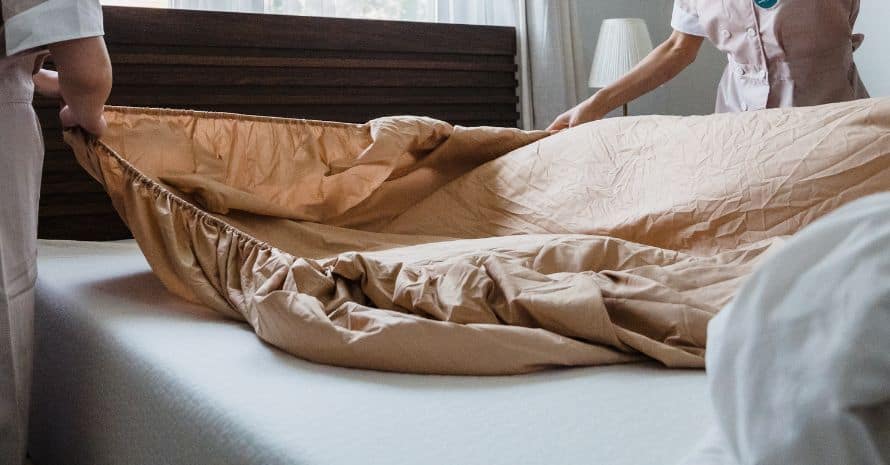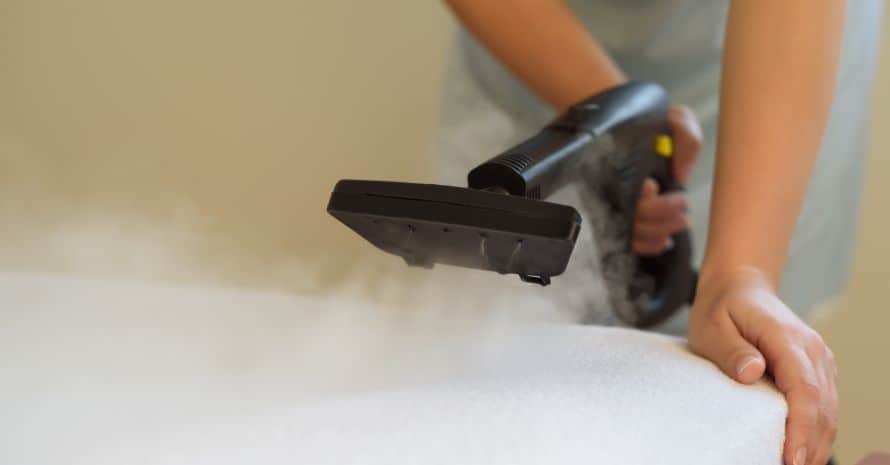When you think of bed bugs, a dirty, cluttered house comes to mind. But these pests can infest any home, no matter how clean it is. If you think you have bed bugs, don’t be sad!
These pests are hard to get rid of, but you can do it with a little work and persistence; it’s also possible with a professional exterminator. In the meantime, there’re some things you can do to prepare for this process. This guide will show you how to prepare a house for bed bug extermination.
[wpsm_titlebox title=”How to Prepare for a Bed Bug Treatment” style=”main”]
1. Thoroughly clean all infested areas. This includes vacuuming, mopping, and dusting. Pay attention to cracks and crevices, as these are prime hiding spots for bedbugs.
2. Reduce the clutter in your home.
3. Launder all infested bedding, clothing, and other fabric items in hot water.
4. Seal off any cracks and crevices in your home.
[/wpsm_titlebox]
Bed Bugs Features
Bed bugs are common pests in homes; it’s a serious problem. They live in the cracks and crevices in the bed frame and furniture and come out at night to feed on the blood of their victims. They can live for months without feeding and travel on skin or clothes. Bed bug extermination is difficult, but it is possible if taken slowly.

Stages of Preparation for Bed Bug Extermination at Home
It’s important to know if you have a bed bug infestation and what to do before an exterminator comes for bed bugs.
The first action is to identify where the parasites are coming from. This can be tricky, as pests are often brought into the home on clothing or luggage without the homeowner realizing it.
Next, if you have a bed, look for them in the mattress’ seams and headboard’s cracks. If you have a couch, look for them in the cushions and cracks of the frame. Once you have a general idea of where the bed bugs are congregating, you can begin to prepare that area for treatment.
Start by decluttering the area as much as possible. This means removing any unnecessary items from the room, including clothes, shoes, books, and anything else that could be harboring insects. If possible, put these items into sealed plastic bags to prevent the bed bugs from spreading.
Next, vacuum the area thoroughly, paying special attention to cracks and crevices where these parasites like to hide. This includes vacuuming all carpets, mopping all hard floors, and dusting all surfaces. You must remove as much clutter as possible so the exterminator can easily access all the areas that need to be treated.
Finally, wash all sheets, blankets, and pillowcases in hot water and dry them on high heat. Any clothes or other fabric items that have been in contact with bed bugs should also be washed and dried on high heat. This will kill any parasites and help prevent them from spreading.

Seal any cracks and crevices in your home. It will help prevent bed bugs from hiding and make it easier for the exterminator to find and treat all the parasites.
Check all food is properly sealed and stored away. This will prevent insects from feeding on your food.
Check all pets are removed from the home. It will protect them from being exposed to the pesticides used during treatment.
After all that process, you may have a question, “Can I leave things on shelves before bedbug removal?” Of course, it’s better to “clean” the treated area as much as possible and take everything outdoors, if possible, in the yard, on the balcony. However, if you have no such possibility, you should inspect all the things on the shelves for the presence of insects, put them in airtight bags and remove them as far away as possible.
With these preparations, you’re now ready to have your house treated for bed bugs. The exterminator will likely use a combination of insecticides and heat to kill the bugs and their eggs.
What to Do After Bed Bug Extermination?
After bed bug extermination, the home should be thoroughly dried. The residual bed bug pesticide may cause surfaces to become sticky, and your home should be vacuumed. The vacuum cleaner should be emptied and cleaned thoroughly with hot, soapy water. Check for eggs, droppings, and bugs. The area around the bed needs to be cleaned carefully. Any furniture in the room, including mattresses and springs, should be thoroughly washed with a soapy solution.
Once the bed bugs have been exterminated, you should take steps to prevent them from returning. This includes regularly vacuuming your home and using dust mite covers on your bedding. You should also avoid bringing secondhand furniture or clothing into your home. Once these things are done, you can move on to the next step. You will want to purchase a mattress cover and a pillow cover. By taking these precautions, you can help to ensure that your home remains bed bug-free.

Is Bed Bug Extermination Safe?
Bed bug extermination is a process that can be completed safely. However, it’s always best to err on the side of caution. To get rid of bed bugs, use safe and effective products. This is especially important because the chemicals can be dangerous if they’re not used properly. When you’re deciding on bed bug extermination, it’s always best to hire a professional. There’re many bed bug extermination tips, but hiring a professional will ensure that the process will be done correctly and efficiently.
Also, it’s important to use a product approved by the EPA. Bed bug extermination is actually safe and can be performed in a few hours.
FAQ
Do you have any other questions about bed bug extermination? Perhaps, you will find detailed answers in this section.
How do you prepare for bed bug fumigation?
Remove all items from the space that you want to fumigate. This includes clothing, furniture, and appliances. Be sure to put all items in sealed bags so that the bed bugs can’t escape. Once all items are removed, clean the space thoroughly.
[su_youtube url=”https://www.youtube.com/watch?v=fK0vDWMAiMA”]
How long does it take to prep for bed bug treatment?
If you’re thinking about treating your home for bed bugs, you might wonder how long the process will take. The truth is, it can vary depending on the severity of the infestation and the size of your home. However, most people can expect to spend several hours preparing their homes for treatment.
Can I sleep in my bed after bed bug treatment?
Yes, but there are a few things you need to do to make sure the treatment is effective, and you don’t end up with more bed bugs. First, make sure the treatment is effective against bed bugs. Some treatments, like diatomaceous earth, can take a few days to work. Next, vacuum your mattress and box spring thoroughly. Finally, wash all of your bedding in hot water. Once everything is clean and dry, you can sleep in your bed again.
Get Ready for Bed Bug Prevention Properly
Bed bugs are an epidemic in the United States. They’re a nightmare for people allergic to them and are a nuisance for everyone else. They’re difficult to eradicate on your own without experience.
The best way to prevent bed bugs in your home is to keep it clean and uncluttered. Vacuum regularly and inspect secondhand furniture and clothing before bringing them into your home. If you think you have these parasites, contact a professional exterminator immediately.
What do you think about it? Are all the recommendations for preparing for bed bugs preparation for treatment listed? If you have anything to add, I would appreciate your advice in the comments.
